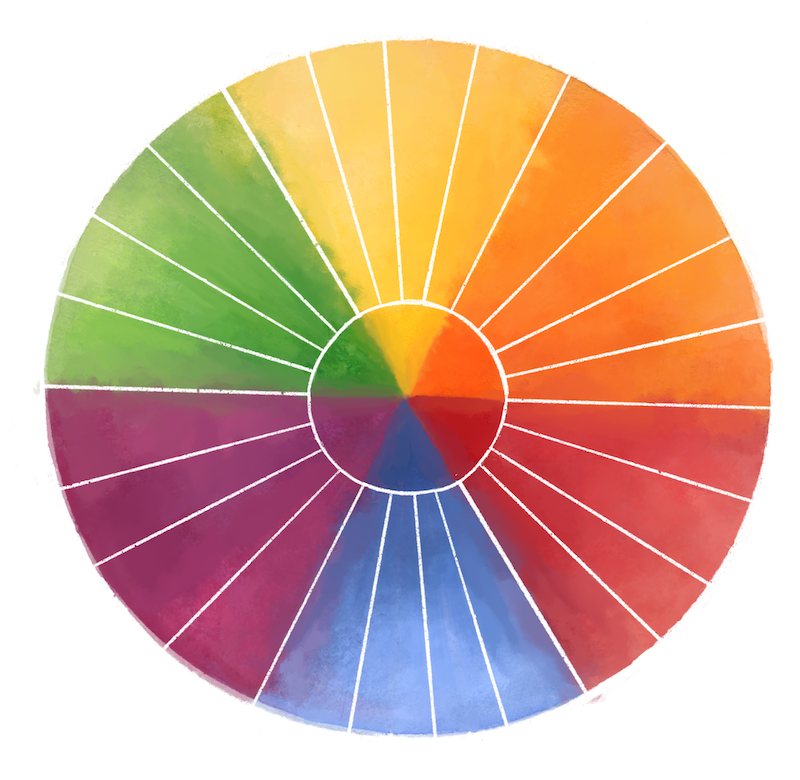
Loading...

You pressed the pause button. You can stay here as long as you’d like. Press the play button to return to your feelings journey.
How are you doing?
A journey of emotional awareness, where we uncover the power of naming and visualizing your feelings.
By Abby VanMuijen with Michelle Pera-McGhee
Hi there, and welcome! My name is Abby. I’m an artist and have been learning a lot about how to express my feelings over the past few years. I made some art and some tools that helped me and wanted to share them with you.
On this journey, you’ll interact with those tools and practice articulating your own emotions. Please take good care of yourself.
If you’re not up for that, that’s okay too– feel free to come back another time. You can press the pause button in the top right to take a break at any point.
Hi, how are you doing? Options: ok, good, not great, or busy.
Until recently, I would always answer the question “how are you doing?” with one of those options I just listed– “okay,” “good,” “not so good,” or my favorite…“busy.”
But then that started to change.
I started to experience panic attacks, depression and anxiety, and engaged in non-suicidal self harm.
So I got my butt into therapy (where they don't let you off the hook with answers like this...).
My therapist suggested I use a feelings wheel to help improve my "emotional vocabulary."
I could choose words from the wheel to get more specific about how I was feeling.
Can you think any other words for the simple word you chose earlier?
Who knew– you can feel more than one feeling at once.
Dr. Lisa Feldman Barrett calls this “emotional granularity.” The more specific we can get, the more easily we can identify what our body is telling us it needs. Pretty cool, eh?
Enjoying these activities? Click here to open them in a new tab.
I also thought it was interesting that the wheel was organized by color and category. Although I didn't quite like the colors and categories on the wheels I found...
Colors can have very strong emotional associations - but they're different for everyone.
I started to do this every day. I'd write the words I was feeling and the color I associated with that feeling.
I found a lot of my associations lined up with the colors & character designs from the Pixar movie "Inside Out" - so I studied their process.
It turns out, most scientists agree, there are at least 5 core emotions that track back to the way our bodies intuitively communicate our needs to our caregivers before we have language.
Isn’t that FASCINATING?
So I added a new element to my practice - tracking how feelings show up in my body and facial expressions. I would draw an outline of my body and then color and make notes about where I felt each feeling.
When I feel frustrated, it looks like this:
Take a moment here to pause and notice your body. Start at the top-most part of your body and scan down through your center, out to your edges.
I started to notice some patterns in how the colors I was using lined up with how and where the feelings showed up in my body.
From there I could track that to some patterns of what my body was trying to ask for.
Every body is different, and they are the source of SO much information. It can be overwhelming to know what to do with it all.
I started to practice connecting my feelings to my needs by asking myself, “What does my body need in this moment?”
What does your body need right now?
I ended up turning all of this into my own emotion wheel.
I use the words, the colors, the body diagram and the needs chart to better understand and express how I'm doing each day and what I may be needing to experience more joy (satisfied needs) in my life.
I no longer answer the question “how are you doing?” the same way.
And I hold other people’s answers with more tenderness.
In difficult moments, I have some more tools to pause… and ask myself “what word is this? What color is it? Where do I notice it? What is my body telling me it needs?”
I try to do this most days in my sketchbook. These are some of my drawings.
I hope you enjoyed this journey and these tools– and that they inspire you to build your own practice of collecting “emotional data” in whatever way works best for you.
Thanks for making it all the way to the end. You’re welcome to come back to this page or the activities page any time you’d like.
If you’re interested in digging deeper, ahead is a list of resources that inspired and informed this project.
Like this story? Consider directly supporting the author.
Abby’s Work
Words Section
- “Emotional Granularity” – Lisa Feldman Barrett, PhD
Inside Out
- “Inside Out” the movie– created by Disney Pixar
- Dr. Paul Eckman’s work on emotions, micro-emotions and facial expressions
- Dacher Keltner, PhD’s work on the social function of emotions
- For more about the character development process– type “Inside Out Character Design Process” or “Inside Out Emotion Research Specialists” into your favorite search engine and enjoy the rabbit hole
Needs
Somatics & Embodiment
- Bodily Maps of Emotions by Lauri Nummenmaa, Enrico Glerean, Riitta Hari and Jari Kietanen
- Somatics for Social Justice Workshop with Melina Kai Martinez via Both/And
- Resmaa Menakem’s work on Somatic Abolitionism and Foundations in Somatic Abolitionism Course co-facilitated with Carlin Quinn
- The Embodiment Institute & the work of Prentis Hemphill
- Skin, Tooth, and Bone: The Basis of Movement is Our People. Sins Invalid. 2nd ed., digital ed., 2019.
- Gabor Mate, MD’s book: “The Myth of Normal”
- Peter Levine, PhD’s book: “Waking the Tiger”
- Bessel Van der Kolk, MD’s book: “The Body Keeps the Score”
Official and unofficial emotion researchers
- The OG Feelings Wheels by Robert Plutchick, and later adaptation by Dr. Gloria Wilcox. Lindsay Braman also has a great wheel and lots of other info/resources to check out
- “You Are Your Best Thing” anthology edited by Tarana Burke and Dr. Brene Brown
- “Radical Dharma: Talking Race, Love and Liberation” by angel Kyoto Williams, Lama Rod Owens and Jasmine Syedullah
- Adrienne Maree Brown’s work – in particular “Holding Change”, “Emergent Strategy” and “How to Survive the End of the World” podcast with Autumn Brown
- Candace Pert, PhD’s book: “Molecules of Emotion”
- Dr. Brene Brown’s work on Emotions– in particular “Atlas of the Heart”
- Susan David, PhD’s work and book on “Emotional Agility”
- “Permission to Feel” by Marc Brackett, PhD
Some more folks doing amazing drawing + feelings work:
- “Draw Together” with Wendy MacNaughton
- Rukmini Poddar – check out her art, instagram account and workshops!
Thank you
This work would not exist without the continued encouragement, critique and care from:
Jadelynn St Dre (MA, LMFT, CST), Caitlin Terzulli (LCSW, CATC-IV, CST), Raye Kahn (NCPT, CSCS, CMT), Iris Leung (PsyD), Alicia Almonte (LICSW), Morgan Evans, Rio Holaday, Saralyn Hodgkin, Allison Allbee, Dr. Nicole Arlette-Hirsch, Dr. Raygine DiAquoi, Zina Goodall, Rajkumari Neogy (CEO ibelong), Laura Chow Reeve, Emily Simon, The 2020-2021 Homeroom Cohorts, the team at The Pudding and everyone else who has given this project such love <3
